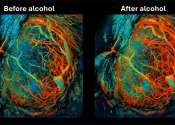Expert analysis refutes claims that humans are colonized by bacteria before birth
Scientific claims that babies harbor live bacteria while still in the womb are inaccurate, and may have impeded research progress, according to University College Cork (UCC) researchers at APC Microbiome Ireland, a world-leading ...
Jan 25, 2023
1
31







